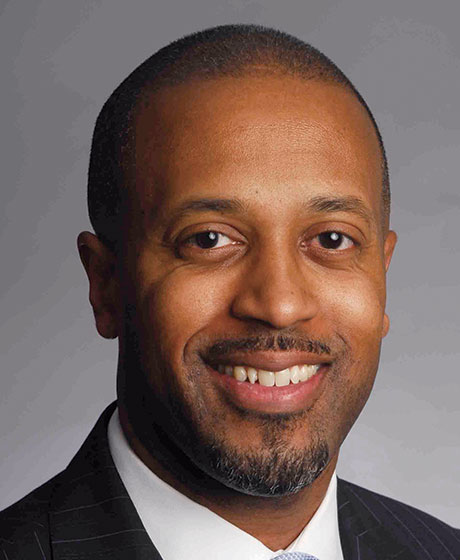
CEO’s note
by Vernon M. Billy
School facilities and Proposition 51 — it’s more than just money
t’s been more than two years since Sylvia Mendez regaled CSBA’s Delegate Assembly in May 2016 with her recollection of her family’s involvement in the historic Mendez v. Westminster case. The stories that Ms. Mendez shared with CSBA’s Delegates about her experience as a Mexican American student more than 70 years ago left a lasting impression on all of us who listened to her heroic stories of struggle while attending school in facilities that would be considered appallingly unsafe by today’s standards.
I wrote about the school conditions that Ms. Mendez described two years ago, but it bears repeating.
“Two wooden shacks on a dirt lot next to a cow pasture… Hand-me-down books… An electric fence — which shocked one of my classmates… Eating lunch outside at this school, seated next to the pasture, covered in flies.”
This is how Sylvia Mendez and the other Mendez children described the conditions of her “Mexican-only” school to our Delegates, and in a 2016 Los Angeles Times recollection of the case.
Seventy years later, is this still the condition of California’s schools? Certainly not. We’ve come a long way since then. However, the fact remains that public schools throughout the state are in dire need of safety upgrades and modernization, and many districts need to build new schools in order to relieve crowded classrooms and accommodate future student growth.
Collectively, school districts across the state have identified more than $3.5 billion worth of urgently needed construction and modernization projects, many of which have been sitting on the State Allocation Board’s backlog for several years. In recognition of this need, California’s voters resoundingly approved $7 billion worth of facilities bond money for K-12 construction and modernization in 2016 with the passage of Proposition 51.
This snail’s pace at which the state is releasing Proposition 51 funds defies the will of California’s voters
The statement of Proposition 51 was clear: Voters, particularly parents, have an expectation that their local school districts, with state-funded assistance, will make every effort to meet the needs of students and communities by building and modernizing schools — and they have already said “Yes” to the bond money that will translate those efforts into reality.
Two years after the voters said “Yes,” the state has not honored their voice.
Only 20 percent of the $7 billion approved by California’s voters has been released in the last two approved state budgets combined, meaning schools that have already been waiting for years to put shovels in the ground — or to be paid back for prior projects so new ones can begin — are having to wait even longer to meet needs that cannot wait.
This snail’s pace at which the state is releasing Proposition 51 funds defies the will of California’s voters, manipulates our initiative process, subverts our democratic principles and, worst of all, undermines our students.
On Aug. 14, CSBA issued an open letter to the next Governor of California in the Los Angeles Times, Sacramento Bee, San Diego Union Tribune and the newspapers in the Bay Area News Group, urging the prompt release of the full $7 billion in K-12 Proposition 51 funds (see page 7).
This open letter is a part of our ongoing efforts to get more Proposition 51 funds released to school districts. But the fact remains that upholding the will of the voters and releasing the full complement of Proposition 51 money must be at the top of our next Governor’s to-do list. With another recession around the corner, CSBA’s call to release the voter-approved bond funds certainly makes good policy sense, but also makes good economic sense as well.
It is completely counterintuitive for the state not to harness the economic boon and job creation that comes with $7 billion worth of school construction and modernization projects. Delaying the release of the money, as the state has done for the last two years, actually costs taxpayers more as interest rates and construction costs increase over time.
We owe it to our students and the voters who declared in a common voice that new and modernized school facilities is a priority.
We owe it to the previous generations of Californians — like Sylvia Mendez and her family — who fought for the right of every California student to attend the best possible schools.
Most importantly, we owe it to the next generation of Californians, who will be our future leaders and the caretakers of our democracy.
